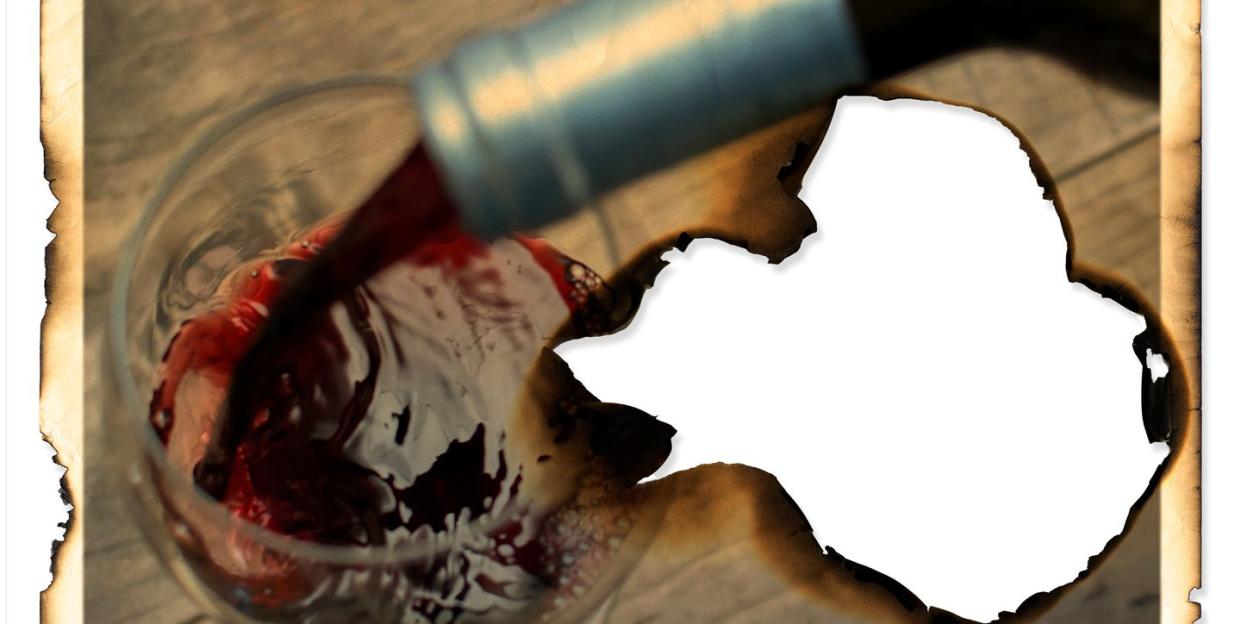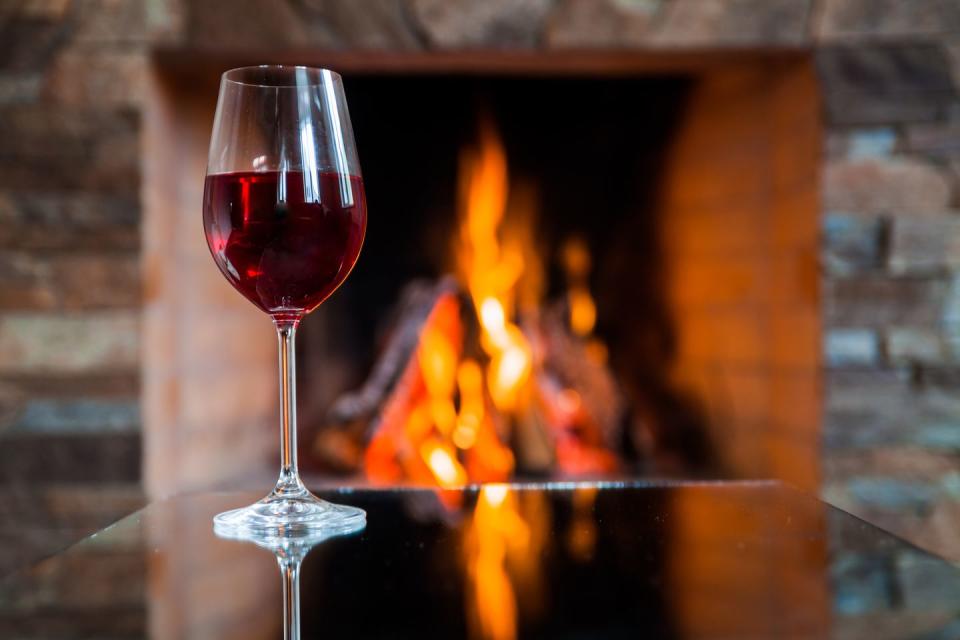What to Drink After Your House Burns Down

There’s almost never a good time for your house to burn down. Just before a pandemic, and the subsequent quarantine, is an especially bad time. Our house, in Water Mill, New York, caught fire on December 28, 2019, thanks to an improperly constructed chimney. We woke to the sound of the smoke alarm and, after a brief attempt to deal with the flames with a single fire extinguisher, ran outside to await the fire trucks.
We were fortunate in several regards: We and all of our pets escaped without injury; we had a guesthouse on the property to shelter in until we could rebuild. The wine cellar survived a minor flood, aside from some label damage; the bottles were packed up and sent to storage. I selected 50 or 60 to tide me over, thinking that these would get me well into the summer, given that I would be in Manhattan and elsewhere for most of the winter and spring.
In fact, we returned to Long Island in mid-March and remained there through the summer, rapidly depleting the store I had set aside. If ever there were a time I wished I had a fully stocked wine cellar under my feet, this was it. Instead I have taken the opportunity to improvise, to try wines I don’t normally drink, to sharpen my wine pairing skills, and to take advantage of retail offers of wines that normally would be going to restaurants.
One of the lessons of my personal pandemic is that I should pay closer attention to what’s going on in Spain. I’ve visited winemakers in Rioja, Catalunya, and Priorat over the years, but I hadn’t opened a Spanish wine in months, until I got almost simultaneous offerings from two of Spain’s hottest wineries, Raúl Pérez and Comando G.
The latter is the passion project of two fortysomethings, Fernando García and Daniel Landi, who work with ancient garnacha vineyards in the foothills of the Sierra de Gredos mountains west of Madrid. Garnacha (Spanish for grenache, a dominant grape of Châteauneuf-du-Pape) can make big alcoholic wines in hot climates, but when it’s grown in cooler, high-altitude places it can produce wines that are almost pinot noir–like. Château Rayas, the great Châteauneuf, is a reference point for the two winemakers, although they are also obviously inspired by Burgundy and by the respect for individual sites that they observed there.
Raúl Pérez, who makes wine in the Bierzo region, takes a strictly organic approach in the vineyard, with low intervention in the winery. His red wines are primarily made from the mencía grape, and he also makes a brilliant, saline, mineral albariño called Sketch. His rich, robust entry-level red wine, Ultreia Saint Jacques, is one of the world’s great wine values, at around $20. But for a real thrill, try to find his limited production 2016 El Pecado.

Although I drink more wine from Burgundy than any other region, I’ve never been much interested in aligoté, the “third grape” of Burgundy, a white member of the pinot family that seldom gets much respect. But lately aligoté has developed a kind of hip cachet.
Les Aligoteurs is an organization of vintners who are eager to promote this unfashionable variety, and one of the best whites I’ve had this season is from one of its members: Nicolas Faure’s 2018 Aligoté “La Corvée de Bully,” which comes from 100-year-old vines just above Corton-Charlemagne. Even chardonnay heavyweights like Jean-Marc Roulot of Meursault and Arnaud Ente of Puligny-Montrachet have added aligoté to their lineups.
While we’re on the subject of white Burgundy, I urge you to buy all the 2017s you can find. It’s the best vintage for whites since 2014, and to my mind it’s better for drinking in the near term.
Yet another Covid-era retail offering I couldn’t resist was for Domaine de la Côte 2017 pinot noirs. These sought-after wines from the Santa Rita Hills north of Santa Barbara are usually available only to mailing list customers or at restaurants—but suddenly I found not one but two offers in my inbox, and I jumped.
Vintners Rajat Parr and Sashi Moorman make beautiful reds informed by their love of Burgundy, which somehow manage to seem both flirty and shy at the same time. If the 2017 Domaine de la Côte Bloom’s Field had a dating profile, it might say: California fitness buff with French sense of style.
This story appears in the October 2020 issue of Town & Country. SUBSCRIBE NOW
You Might Also Like

